Auguste Escoffier Biography
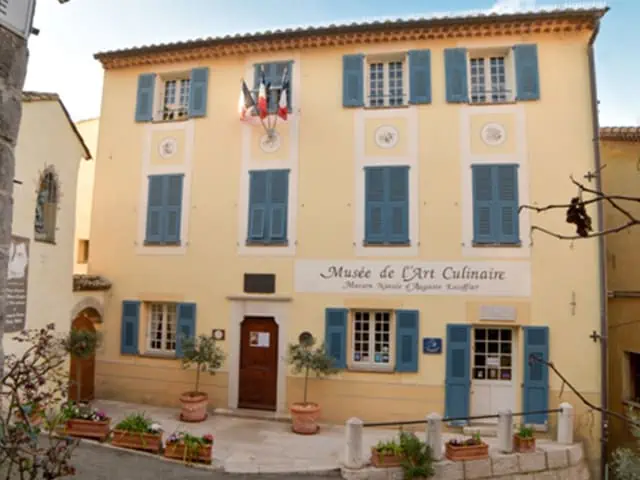
Birth
1846: Auguste Escoffier born in Villeneuve-Loubet (Alpes-Maritimes) on October 28 to a blacksmith father.
1859: At the age of 13, he apprenticed with his uncle at the Restaurant Français in Nice for 5 years.
1865: Hired at the Petit Moulin Rouge, an elegant restaurant in Paris, as a commis rotisseur then saucier.
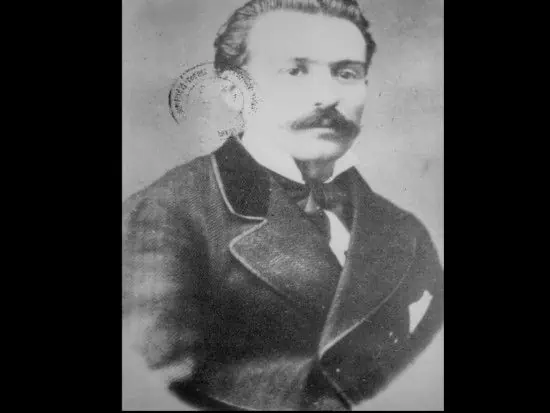
Career start
1870: Franco-Prussian War. Chef at the Rhine Army headquarters in Metz. Starts thinking about preserves and culinary preparations. After the fall of Metz, Chef de Cuisine for Marshal Mac Mahon, then in captivity in Wiesbaden.
1873: After a winter season in Nice, he returns as head chef at the Petit Moulin Rouge, frequented by the aristocracy and celebrities of the day.
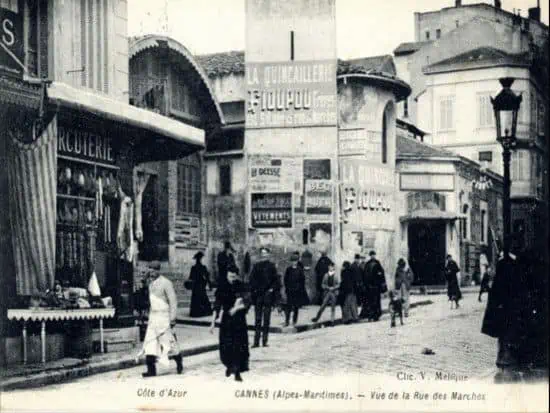
Married and owner
1876: Buys Le Faisan Doré, a delicatessen in Cannes, to which he adds a restaurant for the winter season. He divides his time between Paris and Cannes for two years.
1878: Marriage on August 28 to Delphine Daffis, daughter of a Parisian publisher. They have three children: Paul, Daniel and Germaine.
He sells his business in Cannes in the following months, due to several deaths in his in-laws.
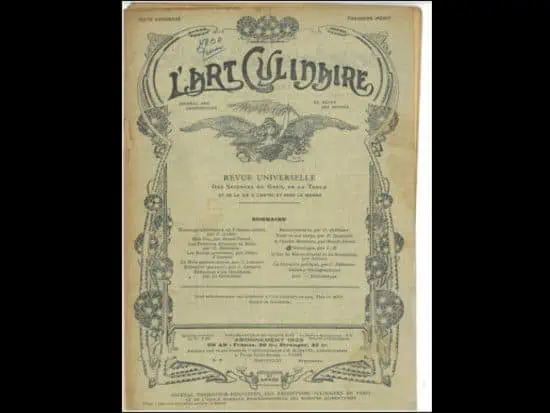
First writings
1883: Publication of The Culinary Art, the magazine in which Auguste Escoffier published his “Memoirs of a Cook in the Army of the Rhine” and “The Soldier’s Diet in the Field“.
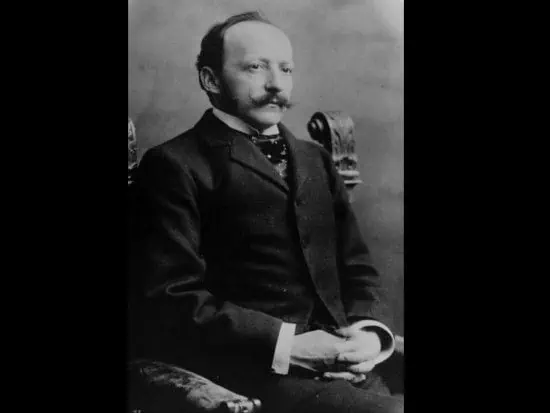
A decisive encounter
1884: Meeting in October with César Ritz, director of the Grand Hôtel de Monte-Carlo, to take charge of the kitchens in winter and those of the Grand National in Lucerne in summer. It was the start of a long, friendly and fruitful collaboration between the two men, who together established the rules for international luxury hotels and palaces that are still in force today.
1886: Publication of his first book, Treatise on the Art of Working with Wax Flowers.
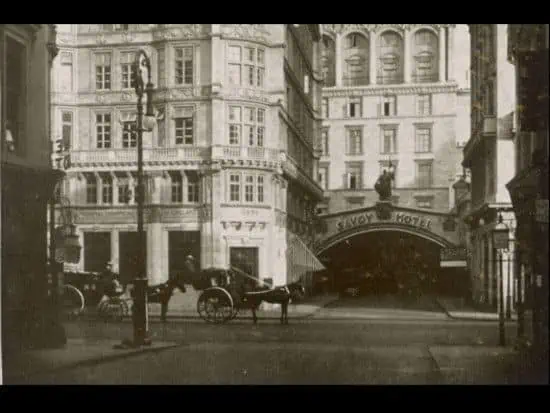
The Savoy in London
1890: Ritz and Escoffier take charge of the Savoy in London, a prestigious establishment and the finest hotel of its time, opened a year earlier.
Began collaborating with the Little Sisters of the Poor, providing them with unused surpluses; this collaboration continued until his retirement in 1920.
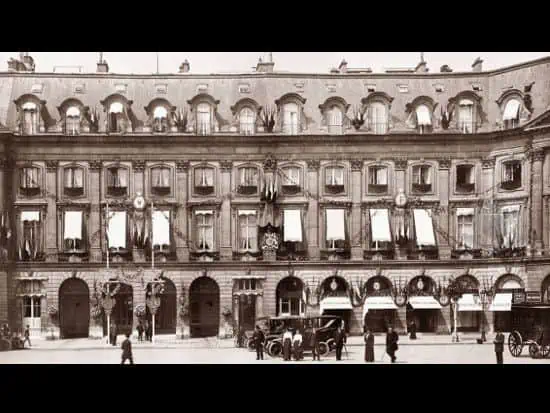
The Ritz in Paris
1898: Inauguration of the Ritz, Place Vendôme, Paris, on June 5 with a sumptuous gala. The most important personalities in the world joined Parisian society for the occasion. Immediate success and prestige. Escoffier managed the kitchens for the first few months.
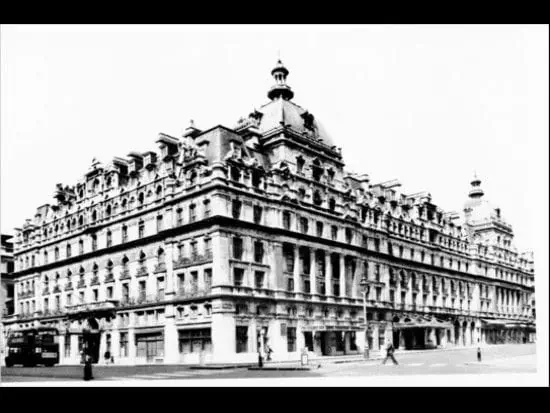
The Carlton in London
1899: On July 1, the two men opened the Carlton in London, where their clientele followed them, including Sarah Bernhardt, the Prince of Wales and his entourage.
1902: Departure of Ritz, who was ill and returned to his native village. Escoffier remained there until his retirement in 1920.
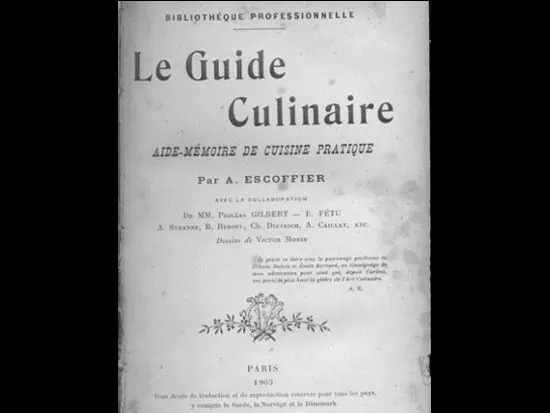
The Culinary Guide
1903: Publication of the first edition of the Culinary Guide, which was to become the cooks’ Bible. It was republished three times during Auguste Escoffier’s lifetime, in 1907, 1912 and 1921, and translated into over ten languages.
Escoffier set up Britain’s first mutual insurance company for chefs, to help his colleagues in the greatest difficulty.

International Consultant
1904: Consultant to the German shipping line Hamburg-America Line to design the kitchens of the Ritz-Carlton restaurants on their liners.
1906: Face-to-face meeting with Kaiser Wilhelm II in June aboard the Amerika, then again in 1913 on the inaugural cruise of the Imperator.
1907: First trip to the United States aboard the Deutschland.
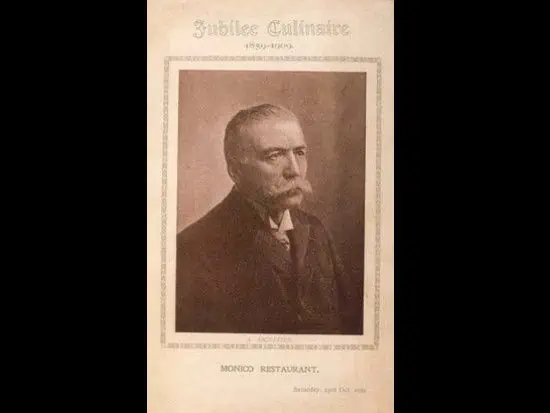
Jubilee
1909: Professional jubilee at the Café Monico in London. At Escoffier’s request, the amount of the subscription to be donated to the cooks’ retirement home near Paris.
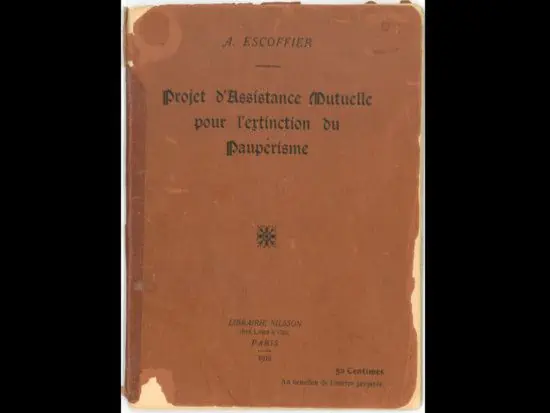
The humanist
1910: Publication of the brochure Mutual Assistance Project for the Eradication of Poverty. At a time when sickness and old age were synonymous with poverty, he proposed various measures for material security and retirement, thus imagining a true Social Security system before its time.
Second trip to the United States, for the opening of the Ritz-Carlton in New York.
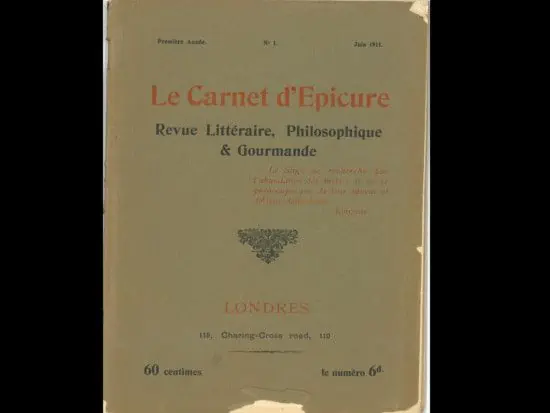
Sharing and transmission
1911: Escoffier creates the magazine Le Carnet d’Épicure, to promote tourism in France to the English.
Opening of Westminster College in London, of which he is one of the founders, to train kitchen and dining room students.
Narrow escape from the Carlton fire in London. Establishment of the Carlton Hotel brigade in Cannes.
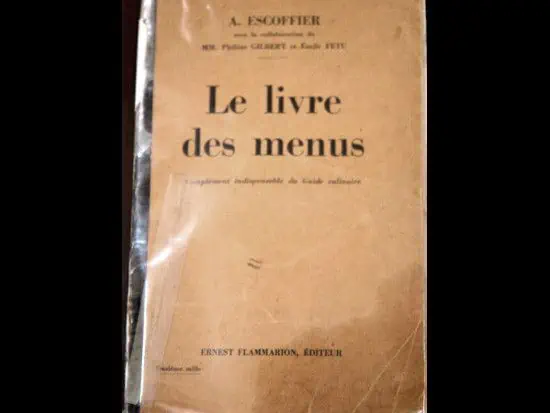
Epicurean dinners
1912: Publication of the Menu Book, an essential complement to the Culinary Guide.
Creation of the League of Gourmets and organization of the first “Epicuean Dinner“. A single French dinner, served on the same day in different locations around the world. The first dinner brings together over 300 people at London’s Hotel Cecil, and more than 4,000 guests in 37 European restaurants.
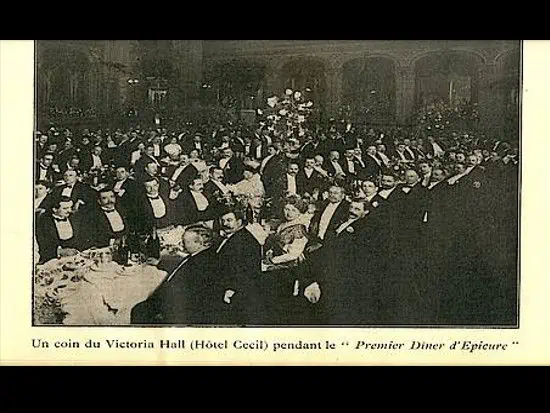
World War I
1914: Tenth and final Epicurean Dinner, attended by over 10,000 guests in 140 cities in Europe, New York and Montreal.
Escoffier sets up a committee to help the families of cooks mobilized in France.
His second son Daniel disappears in the early months of the war.
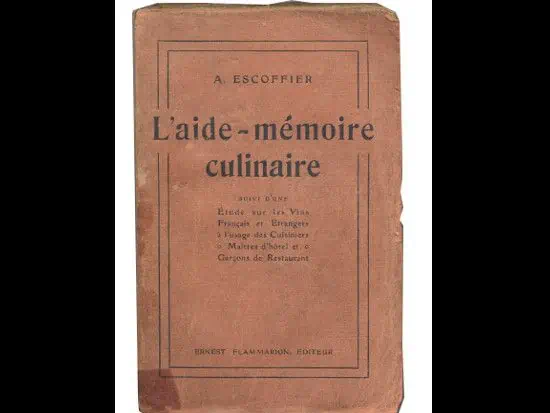
Culinary Memory Aids
1919: Knight of the Legion of Honor, awarded by President Raymond Poincaré on a visit to London to mark the first anniversary of the 1918 Armistice.
Publication of The Culinary Handbook, to facilitate service in the dining room.
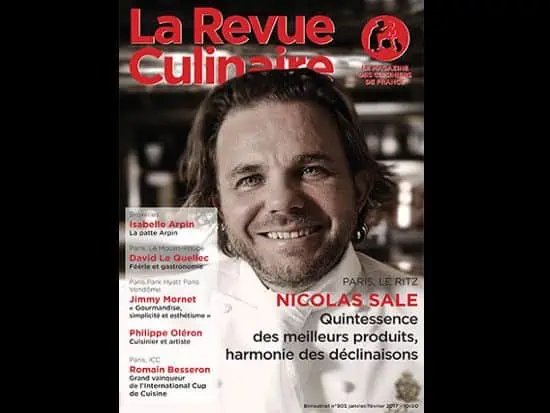
Retirement
1920: Leaves the Carlton in London to retire to his villa in Monte-Carlo after 61 years of a brilliant and busy professional life. He trained over 2,000 chefs who made French cuisine and products known throughout the world. He will nevertheless remain very active during his retirement.
Becomes honorary editor-in-chief of the first editorial board of La Revue Culinaire, still published today.
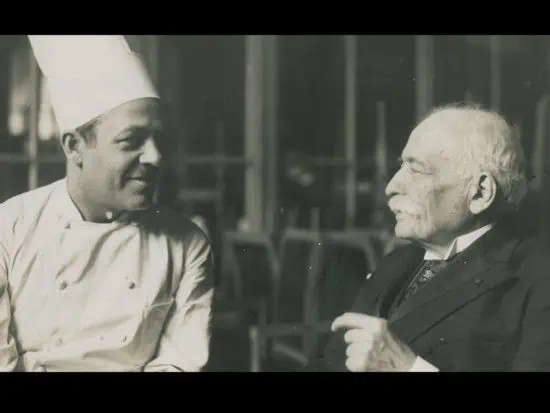
Active retirement
1923: Danish sovereigns award the Cross of the Order of Dannebrog in Copenhagen.
1926: Third trip to the United States, invited by the Cunard Line to celebrate its 80th anniversary.
1927: Publication of Rice. The best, most nutritious food Escoffier’s “The best of the best”, a book aimed at low-income households, demonstrates Escoffier’s concern that everyone should not only be able to feed themselves, but also eat properly.
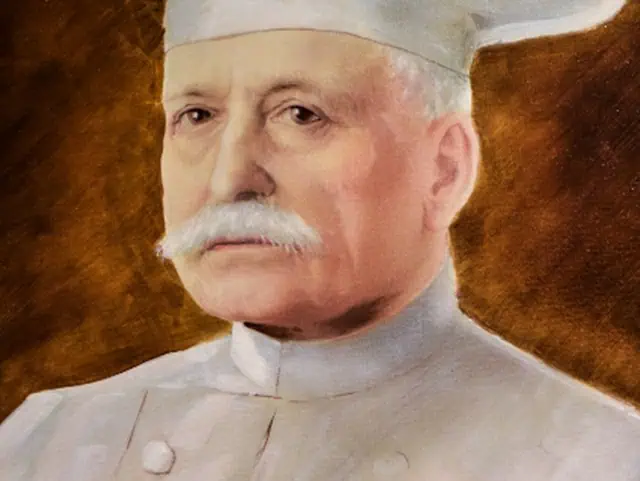
Legion of Honor
1928 : Elevation to the rank of Officer of the Legion of Honor in Paris by Edouard Herriot, Minister of Public Instruction and Fine Arts, who thanked him for restoring nobility to the profession of cook.
He is the first chef to receive this distinction.
But, he writes, “I knew that this honor also reflected on our entire profession.”
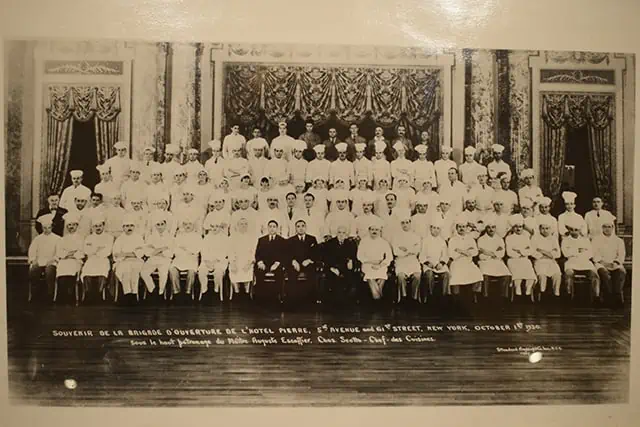
Last years
1929: Publication of La vie à bon marché: La Morue, aimed like Le Riz at consumers on modest incomes.
1930: Fourth and final trip to the United States, for the opening of the Hôtel Pierre in New York, where he set up the brigade under the direction of his pupil, Charles Scotto.
1934: Publication of Ma Cuisine, a simplified version of the Culinary Guide for home cooks, also translated into several languages.
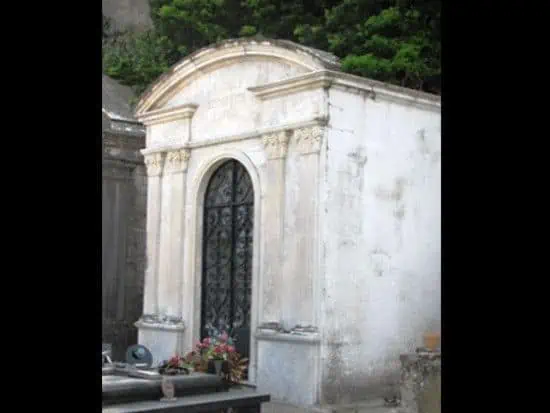
The big departure
1935: Auguste Escoffier died on February 12 at his home in Monte-Carlo, two weeks after his wife Delphine. He is buried, as he wished, in the Villeneuve-Loubet cemetery.